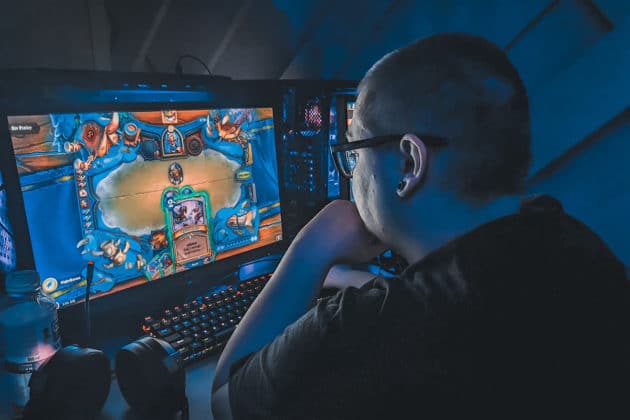The world of video games has evolved over the years becoming one of the biggest sources of entertainment worldwide. From its humble beginnings, the video game world has spawned a multi-billion-dollar industry that’s captured the hearts and minds of millions of people of all ages, all over the world.
Today you can play on any type of console, as well as on your mobile phone or computer, there being multiple possibilities for people of all ages, backgrounds, and interests. From role-playing games and story games to platform games and casual experiences; there are games of all kinds and for all tastes.
Nowadays, in fact, there are also more and more amateurs and professionals who even make a living by sharing their play time via streaming, making this industry even more relevant. And with the arrival of virtual reality, games will reach a technological and digital level that is eagerly awaited by all gamers. The future of gaming is definitely promising.
But have you ever wondered how a game is designed? There are large and popular games famous for their realistic and elaborate graphics, as well as iconic characters that have often jumped from the big screen to gaming devices and vice versa. How are these video games designed, and who devises their scenarios and game strategies? From creating game characters to designing the playthrough and visuals, there’s a hidden art to the discipline of video game design.
In today’s article, we’ll take a look at some of the most important aspects involved in video game design. Let’s get started!
What is involved in video game design?

As is the case with all forms of art, video game design involves a series of steps that must be completed in order to create a playable and enjoyable game. The first thing the designers need to do is come up with an idea, a basic concept on which the game will be built.
After that, it is time to start fleshing out that idea and turn it into a more concrete proposal by developing the game’s mechanics, rules, and objectives. Once that’s done, it is important to think about how the player will experience the game, and what kind of feedback they’ll get while playing. This is where level design comes in, as well as creating engaging and exciting visuals.
Other aspects, like sound and character design, should be taken into consideration throughout the whole process. Let us take a look at some of the most crucial steps a video game design team has to consider when tackling the gargantuan task of creating a new title.
Recommended for you: Video Game Design: What Makes a Successful Video Game?
1. Coming up with a basic idea

As with any work of art, the first step is to come up with a basic idea that will serve as the foundation for everything else. The video game industry is constantly coming up with new and innovative seed concepts, but sometimes the best games are the ones that take a tried-and-true formula and perfect it.
No matter what the source of inspiration may be, as a necessary first step the team needs to have a general idea of what kind of game they want to make before starting to work on it. Are they looking to create an action-packed shooter? A slow and atmospheric horror game? Or maybe a lighthearted and fun platformer?
Whatever the case may be, it’s important to have a clear idea of the game they want to build before getting started with anything else.
2. Game mechanics

After the team has a better understanding of the game they want to make, it’s time to start thinking about its mechanics; that is, how the game will actually be played.
This is where the designers have to start making important decisions, like what kind of controls will the player use? What kind of actions will they be able to perform? What will be the objective of the game? How will the player win or lose?
All of these questions need to be answered before moving on to the next step. Once again, it’s important to have a clear idea of what kind of game you’re trying to make before starting to work on it.
3. Level design

Once the game mechanics have been established, it’s time to start thinking about how the player will experience the game. This is where level design comes in.
The level designer’s task is to create the different stages or levels where the players will be spending most of their time. They need to make sure that each level is engaging and fun to play, while also providing a challenge for players of all levels.
In order to do that, they need to take into account a lot of different factors, like the layout of the level, the placement of enemies and hazards, and the distribution of power-ups and collectibles.

4. Visuals

Another important aspect of video game design is creating engaging and exciting visuals. This is usually done by a team of artists who are responsible for creating the game’s graphics.
The artists have to take into account a lot of different factors when designing the game’s visuals, like the color scheme, the art style, and the overall look and feel of the game.
You may like: 5 Timely Lessons Designers Can Learn from Game Development.
5. Character design

Another important aspect of video game design is creating believable and likable characters. This is usually done by a team of writers who are responsible for creating the game’s story and dialogues.
The writers have to take into account a lot of different factors when designing the game’s characters, like their personality, their backstory, and their motivation.
Of course, there are other aspects that come into play in terms of character design; namely, the visual style of the protagonists, NPCs, and main antagonists. The visual side of things here is usually handled by 2D or 3D designers that have a deep understanding of what players react to and what kind of characters are the best suited to a particular setting and style of play.
It should be noted that character design has improved a lot over the last few years thanks to the development of new technologies. The 2D design has improved considerably, resulting in very realistic characters with components such as skills and emotions that go beyond the screen.
Thus, 2D and 3D design can differ considerably, as each requires different creative abilities, different developed skills, and in general, a much more elaborate design and personality in the latter case. What they agree on is that the process to design game characters includes: principles, theory, and execution.
6. Sound

Sound is one of the most important aspects of video game design, as it can greatly impact the player’s experience. This side of video game development is usually taken care of by a team of sound designers who are responsible for creating the game’s music and sound effects.
The sound designers have to take into account a lot of different factors when creating the game’s audio, like the placement of sound cues. They also need to make sure that all of the game’s sounds are appropriate and fit with the game’s overall aesthetic.
7. Video game development

While video game design is certainly an important aspect of game development, it’s not the only one. In order to actually make a video game, you also need programmers who are responsible for coding the game.
And just like with any other form of art, coding also requires an artistic side. The programmers need to have a deep understanding of game mechanics and be able to translate them into code in a way that is both efficient and easy to understand.
You may also like: How is Game Design Different from Graphic Design?
Video game design is a pretty complex process

As you can see, video game development is a very complex process that involves a lot of different people with different skill sets. From the designers who come up with the game’s concept and mechanics to the artists who create its visuals, to the musicians who compose its soundtrack, to the programmers who code it, there are countless people involved in making video games.
And while each one of these people has their own important role to play, they all need to work together in order to make a great video game. Only when the whole team works together and good synergies are established, we end up enjoying a masterpiece that survives the test of time and that can bring us hours upon hours of entertainment in a way that few other forms of art can provide.
These are just some of the most important aspects to consider when designing a video game. Of course, there are many more aspects that video game creators have to take into consideration.





